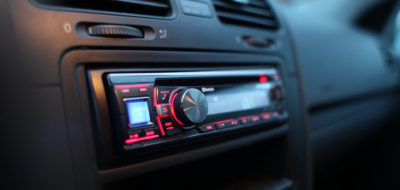Por: Adam Jacobson
WASHINGTON, D.C. —
When we find ourselves in times of trouble, the radio and TV are the media most Americans seek for the latest information and details.
In fact, U.S. adults turn to broadcast TV and radio above all other media by a factor of nearly four to one, new online research shared by the NAB finds.
Morning Consult from March 16-19, 2017, conducted an online survey comprised of 2,251 adults aged 18 and older.
The results indicate that some 57% of respondents are most likely to use local radio and TV stations and/or broadcast networks for updates in the event of an emergency.
Online news sources come in at a paltry 14%.
Cable news channels fare even worse, at 12%.
The data, which comes with the hashtag #WeAreBroadcasters, is clearly designed to appeal to the broadcast media C-Suite, giving it another weapon in its ongoing quest to attract what it believes is its fair share of the ad dollar pie.
The results coincide with the appearance and testimony on Tuesday (5/17) of NAB Chief Technology Officer Sam Matheny at a House Energy & Commerce Committee Communications and Technology Subcommittee hearing on emergency alerting capabilities.
The subcommittee is headed by Chairman Marsha Blackburn (R-Tenn.), and Vice Chairman Leonard Lance (R-N.J.).
Matheny’s testimony highlights the broadcast TV industry’s planned voluntary transition to ATSC 3.0, the next-generation broadcast TV standard, which will include “dramatic improvements in local TV public safety capabilities,” the NAB says.
Matheny offered a video demonstration of ATSC 3.0’s benefits before remarking, “The next step in making these improvements a reality is FCC approval of the petition that NAB jointly filed with America’s Public Television stations, the Consumer Technology Association, and the Advanced Warning and Response Network Alliance.”
The petition was countered by the American Cable Association (ACA), which has expressed concerns over the cost and overall impact ATSC 3.0’s rollout could have on smaller MVPDs and cable TV operators.
How important a topic is this? In her opening remarks, Blackburn said, “The first abducted child to be rescued by an Amber Alert back in 1998 is about to graduate from high-school. Congratulations to Ms. Rae Leigh Bradbury of Fort Worth.”
Meanwhile, House E&C Ranking Member Frank Pallone Jr. (D-N.J.) used the hearing as a platform for addressing “the FCC’s efforts to strip away consumer’s net neutrality protections” at its May 18 Open Meeting.
After urging the Commission “to listen to the American people and reconsider this misguided approach,” Pallone turned to the nation’s emergency alert systems, stating, “New technologies won’t save lives if they aren’t useful and available to everyone. We need to ensure existing systems are free from interference, and we must test and evaluate these systems to make sure they can get the job done.”
Unfortunately, Pallone says, that’s not something the U.S. has always been good at.
“As I mentioned, the first nationwide alerting system was created in 1951, but we didn’t test the nationwide system until 2011—60 years later,” Pallone said. “The results of that test were abysmal. And, entire states didn’t even receive the test alerts. Today, we’re here to learn about the status and future of public safety and what is being done in the name of saving more American lives. When it comes to public safety, we always must ask ourselves how many lives we’re saving, not how many products companies are selling.”
Vía: Rbr



